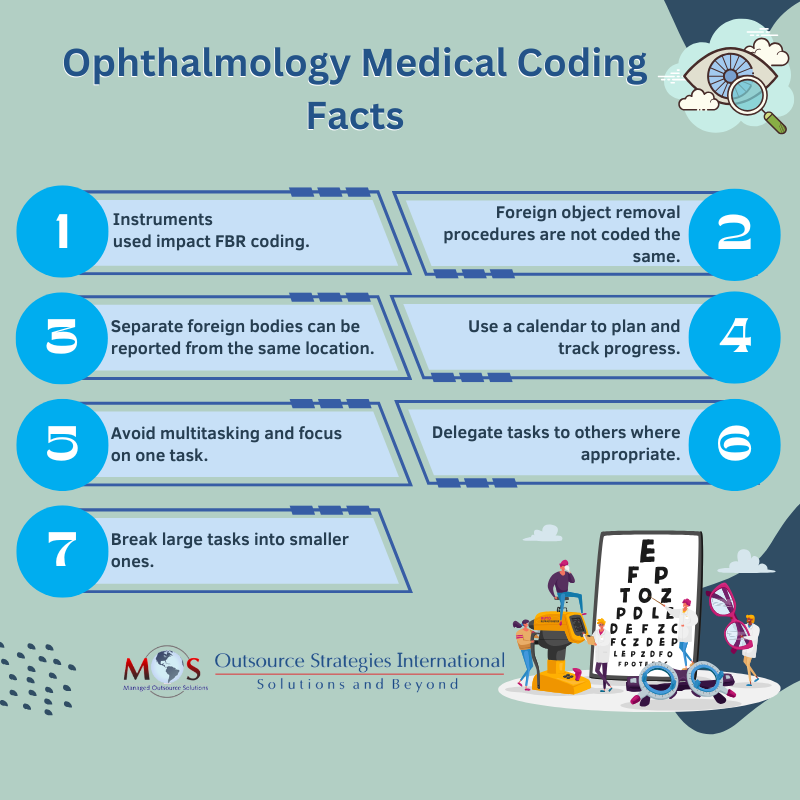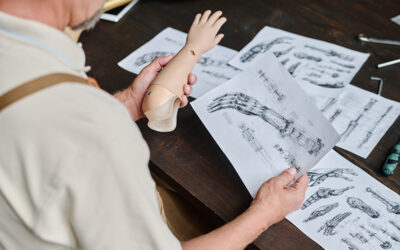When coding for foreign body removal, it is necessary to evaluate all the potential CPT codes. After careful examination, select the most relevant codes that accurately reflect the treatment rendered. However, since the coding guidelines for the removal of foreign body from the eye are complex, ophthalmologists have to understand the nuances of the billing process. Several myths exist regarding the coding process for foreign body removal which need to be cleared up. By outsourcing to a medical billing company that specializes in ophthalmology coding and billing, you can enhance the coding efficiency and accuracy at your practice.
Let’s look at some ophthalmology coding myths that could be causing coding errors and affecting reimbursement.
Streamline medical billing and coding by hiring our medical billing experts.
Improve the financial stability of your ophthalmology practice!
Myths Pertaining to Coding for Foreign Body Removal Explained
- Myth: The type of instrument the ophthalmologist uses doesn’t influence what FBR code to report.
Truth: The CPT codes applicable for FBR procedure does mention the requirement to specify what instrument was used by the ophthalmologist to remove the foreign body. The FBR series of codes (65205 to 65222) make no mention of a specific instrument to take out the FB. Nevertheless, CPT® code 65222 (Removal of foreign body, external eye; corneal, with slit lamp) does point out the equipment utilized to make viewing the affected area easier. If the ophthalmologist made use of a slit lamp to see the corneal foreign body, the code to be used is 65222. If he didn’t use a slit lamp, the code is 65220.
- Myth: All Foreign Object Removals from the Eye Are Coded the Same
Truth: Coding for foreign object removal depends on the depth of penetration and specific location of the object. Superficial objects, like those on the cornea, have a different code than those embedded deeper in the eye, requiring surgical procedures. The distinct CPT codes define the type of foreign body removal, such as CPT code 65220 is used for the removal of a foreign body from the cornea. The usage of instrumentation for the foreign body identification such as slit lamp is considered as well.
- Myth: All Foreign Body Removals (FBRs) within a single eye are clubbed together, which means an FBR can only be coded once per eye.
Truth: It is true that a coder cannot separately report removal of many foreign bodies from the same region of the eye. However, if the ophthalmologist has removed foreign bodies from different regions of the same eye (such as the conjunctiva and cornea) codes can be separately reported for each region. The ophthalmologist should draw a comprehensive figure of the eye that makes clear the specific region and depth of the removed FBRs. If the ophthalmologist has taken out an embedded conjunctival foreign body, you can report a code in 65210 which offers higher reimbursement. This is good news for both coder and physician.
- Myth: Only the Procedure Code Matters
Truth: The diagnosis code is equally important. For accurate coding, the type of foreign object (e.g. metal, dust, or organic material) and any related complications (like infection or abrasion) must be included in the diagnosis coding. The diagnosis code is selected based on whether the foreign body material is magnetic or not. For example, if the foreign body in the left eye is non-magnetic, the diagnosis code is H44.7Retained (old) intraocular foreign body, nonmagnetic. To identify the non-magnetic material, the additional codes Z18.0 – Z18.10, Z18.12, Z18.2 – Z18.2-Z19.9 are utilized.
- Myth: Foreign Object Removal Always Requires Surgery Codes
Truth: Not all foreign object removals require surgical intervention. In some cases, simple tools or flushing with saline may be enough, leading to different and often less complex procedure codes. When surgical code is to be selected for the service, it is determined by the method of extraction. For example, the CPT code 65260 is used for reporting the removal of a metal object from within the posterior segment of the eye using a magnet.
- Myth: A foreign body diagnosis can be coded even if the examination doesn’t reveal a foreign body.
Truth: It is not correct to report a diagnosis code such as ICD-10-CMT15.01XA Foreign body in cornea, right eye, and initial encounter when a foreign body has not come up in the ophthalmologist’s exam. However, coding can be done for H57.8A1 – the sensation of a foreign body, right eye.
- Myth: Foreign Object Removal Codes Are Always Reimbursed Equally
Truth: Insurance companies may reimburse differently depending on the complexity of the procedure, the setting (hospital vs. outpatient), and any follow-up care. Misunderstanding this can lead to under coding or over coding, affecting reimbursement. Proper clinical documentation, usage of appropriate codes and other additional information asked by the insurer are essential for receiving prompt reimbursement.
- Myth: Modifier Usage Is Not Important for Foreign Body Removal Procedures
Truth: Modifiers play a vital role in reporting foreign body removal procedures accurately. For example, -RT (right side) or -LT (left side) is used to specify which eye underwent the treatment for removal. Modifiers are also needed to indicate whether the procedure performed was a case of medical necessity or not to the insurer. For example, if a patient came in for a 6-month glaucoma check and a foreign body removal procedure was performed, then you can use modifier -25 to bill for the FBR services.
Understanding the myths and truths related to ophthalmology medical coding for foreign body removal is essential for ensuring accurate billing and proper reimbursement. Misconceptions about coding, modifiers, and insurance coverage can lead to significant payment issues in the billing process. By recognizing the nuances involved in foreign body removal procedures and adhering to accurate coding practices, ophthalmologists can navigate the complexities of medical billing effectively, ultimately improving both financial and patient care outcomes. A practical option is to outsource to medical billing services that specialize in the ophthalmology billing to maximize reimbursement for your practice.





